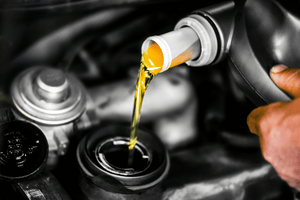Corner Balancing
One of the most important aspects of car setup is the static weight distribution and the cross-weight percentage. Why? Picture the following: Your car is really fast in right-hand turns, but understeers in left turns. If you get the car neutral in left turns, it oversteers in right turns. The situation is frustrating. You have tried springs, shocks, different bars, neutralizing the anti-roll bar, and nothing seems to work. Even on a track with mostly right-hand turns, the problem in the left-hand turns cost a lot of time. While several different setup parameters could have caused this situation, a likely cause is excessive cross-weight. Corner balancing can correct that.
RRT Racing has been setting up race cars for road, autocross and rally course for over a decade. We integrate the corner balancing procedure into our race alignments. Even on street cars, a proper corner balance can deliver a more balanced, neutral feeling car. This can help increase performance, allow the owner to drive the car more confidently, and reduce component wear. Give us a call today to setup your appointment before your next track session.
One of the most important aspects of car setup is the static weight distribution and the cross-weight percentage. Why? Picture the following: Your car is really fast in right-hand turns, but understeers in left turns. If you get the car neutral in left turns, it oversteers in right turns. The situation is frustrating. You have tried springs, shocks, different bars, neutralizing the anti-roll bar, and nothing seems to work. Even on a track with mostly right-hand turns, the problem in the left-hand turns cost a lot of time. While several different setup parameters could have caused this situation, a likely cause is excessive cross-weight. Corner balancing is the solution.
STATIC WEIGHT DISTRIBUTION
Static weight distribution is the weight resting on each tire contact patch with the car at rest, exactly the way it will be raced. This means the driver should be in the car, all fluids topped up, and the fuel load should be such that the car makes your minimum weight rule at the designated time-usually after a race. The car should be at minimum weight, using ballast as needed to make the proper weight.
When working with static weight distribution, we use two percentages to analyze the car’s corner weights: Left weight percentage and rear weight percentage. These tell us all we need to know about the setup relative to the weight distribution. The left weight percentage is found by adding the LF weight to the LR weight and dividing the sum by the total weight.
The rear weight percentage is found in a similar manner: Add the LRand the RR weight together and divide the sum by the total weight. Many electronic scales will perform the calculations for you.
For road racing and autocrossing, the ideal left weight percentage is 50 percent. This makes the cornering force balanced from left to right and offers the best performance overall. However, many cars cannot make the 50 percent left-side weight percentage due to driver offset. Still, it is a worthwhile goal to strive for 50 percent left-side weight.
Rear weight percentage for road racing and autocrossing is less definite. The more power a car has, the more that static weight over the drive wheels helps acceleration off the corners. Additionally, it is much more difficult to change rear percentage much, since rear weight is mostly a design function. It still pays to be thoughtful about weight placement fore and aft in your car.
CROSS-WEIGHT PERCENTAGE
Cross-weight percentage compares the diagonal weight totals to the car’s total weight. To calculate cross-weight percentage, add the RF weight to the LR weight and divide the sum by the total weight of the car. Cross-weight is also called wedge: If the percentage is over 50 percent, the car has wedge; if below 50 percent, the car has reverse wedge.
More wedge means that the car will likely understeer more in a left turn. The advantage to wedge is that the left rear tire carries more load, so the car drives off the turns better. But in a right turn, the opposite occurs and the handling is worse. In almost all cases, the loss of cornering performance in one direction is greater than the gain in the other direction.
One of the problems with cross-weight is that it will change the handling balance from a left to a right turn. This can make maneuvering in traffic difficult, even dangerous. On a road course, the cross-weight percentage should be very close to 50 percent, within a half-degree either way, to keep the handling balance similar in a right-hand turn compared to a left-hand turn. In the example at the beginning of the article, this was the problem: a cross-weight percentage that was less than 50 percent, and probably off by at least two percent.
written by Per Schroeder





